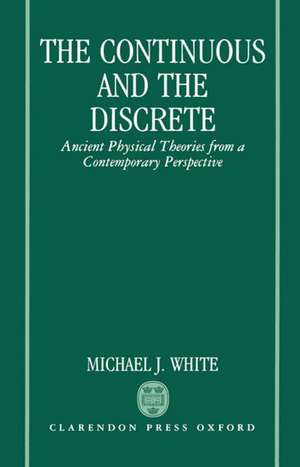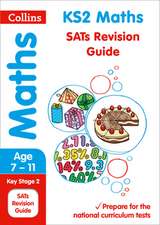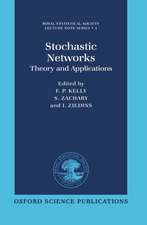The Continuous and the Discrete: Ancient Physical Theories from a Contemporary Perspective
Autor Michael J. Whiteen Limba Engleză Hardback – 30 apr 1992
Preț: 1111.59 lei
Preț vechi: 1689.79 lei
-34% Nou
Puncte Express: 1667
Preț estimativ în valută:
212.77€ • 231.19$ • 178.84£
212.77€ • 231.19$ • 178.84£
Carte tipărită la comandă
Livrare economică 09-15 aprilie
Preluare comenzi: 021 569.72.76
Specificații
ISBN-13: 9780198239529
ISBN-10: 0198239521
Pagini: 360
Ilustrații: 8 line figures
Dimensiuni: 143 x 224 x 26 mm
Greutate: 0.61 kg
Ediția:New.
Editura: Clarendon Press
Colecția Clarendon Press
Locul publicării:Oxford, United Kingdom
ISBN-10: 0198239521
Pagini: 360
Ilustrații: 8 line figures
Dimensiuni: 143 x 224 x 26 mm
Greutate: 0.61 kg
Ediția:New.
Editura: Clarendon Press
Colecția Clarendon Press
Locul publicării:Oxford, United Kingdom
Cuprins
I. Spatial magnitude, time, and motion: An Aristotelian model: Aristotle: The formal analysis of spatial magnitude and locomotion; Aristotle on time and locomotion: Physics and metaphysics; Aristotelian kinematics and non-locomotive Kineseis; Aristotle and the mathematicians, ancient and modern; II. Spatial magnitude, time, and motion: Alternatives to Aristotelianism; The quantum model: Spatial magnitude; The quantum model: Time and locomotion; The Stoic model; Peroration.
Recenzii
`He is well aware of, and admirably avoids, the temptations and pitfalls inherent in this kind of approach. When he deals with the post-Aristotelian philosophers, his clarity and good judgement in regard to the scanty and treacherous evidence are particularly welcome ... A merit of this book is that it forces the reader to ask fundamental questions.'Times Higher Education Supplement
'an unusually productive approach to the history of philosophy, one that combines historical reconstruction through detailed technical analysis from within the perspective of the ancient theories ... One obvious conclusion of the book, built from many rigorous, subtle, and suggestive analyses, is that the principles of the continuous and the discrete have a wide range of significance for ancient and modern physical and mathematical analysis ... White has not disguised the intrinsically technical nature of his material, but he has explicated it clearly and usually succinctly, A modest amount of logical and mathematical notation is used, and his rigorous analysis is supported by a scattering of geometrical drawings and graphs.'Dirk D. Held, Connecticut College, Bryn Mawr Classical Review 3.6 (1992)
'Scholarly, provocative, and persuasive, this work is thoroughly professional'choice, January 1993
'This is a fascinating story, and White tells it well. White's reading of Aristotle is admirably sensitive to the detail of his problems, his methods and his solutions.'Nicholas Denyer, Trinity College, Cambridge, Mind, Vol. 102, No. 408, Oct '93
'This is an important book ... it is well argued and White displays good knowledge of modern literature on the matter.'Leo J. Elders, Institut voor Wysbegeerte en Theologie, Review of Metaphysics, March 1994
'His discussion reveals the conceptual assumptions underlying each position, and his conjectures ... are thought-provoking.'S. Leggatt, University of Reading, The Classical Review, Vol. XLIII, No. 2, 1993
'an unusually productive approach to the history of philosophy, one that combines historical reconstruction through detailed technical analysis from within the perspective of the ancient theories ... One obvious conclusion of the book, built from many rigorous, subtle, and suggestive analyses, is that the principles of the continuous and the discrete have a wide range of significance for ancient and modern physical and mathematical analysis ... White has not disguised the intrinsically technical nature of his material, but he has explicated it clearly and usually succinctly, A modest amount of logical and mathematical notation is used, and his rigorous analysis is supported by a scattering of geometrical drawings and graphs.'Dirk D. Held, Connecticut College, Bryn Mawr Classical Review 3.6 (1992)
'Scholarly, provocative, and persuasive, this work is thoroughly professional'choice, January 1993
'This is a fascinating story, and White tells it well. White's reading of Aristotle is admirably sensitive to the detail of his problems, his methods and his solutions.'Nicholas Denyer, Trinity College, Cambridge, Mind, Vol. 102, No. 408, Oct '93
'This is an important book ... it is well argued and White displays good knowledge of modern literature on the matter.'Leo J. Elders, Institut voor Wysbegeerte en Theologie, Review of Metaphysics, March 1994
'His discussion reveals the conceptual assumptions underlying each position, and his conjectures ... are thought-provoking.'S. Leggatt, University of Reading, The Classical Review, Vol. XLIII, No. 2, 1993














